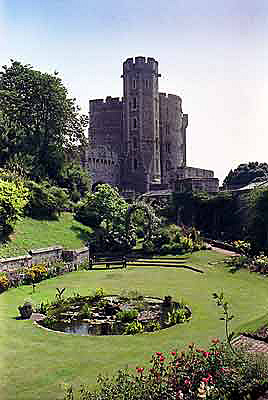
Sharpness – The Photographer’s Holy Grail
by Peter Kotsinadelis
If you were to pick up any one of a number of photographic magazines, or participate in a photography-related users group, 9 out of 10 questions or comments will be about lenses and sharpness. It would seem that the vast majority of photographers are overly preoccupied with sharpness. Talks range from lens build to lens testing with occasional discussions on lens coating or how to test your owns lenses using various targets. Sometimes these discussions seem silly since I know no one who has a frames enlargement of a test target hanging on their wall.
Legendary Time Life Photographer Alfred Eisenstadt was one photographer who did not worry about lens tests. He simply tried a lens and if he liked the results he used it. His concern was composition and creating a memorable image. After all this is what photography is really about.
In my opinion, it is best to look at things from the perspective of creating an image because a good image will always be a good image even if its not what many would consider tack sharp. One example of this is the 1963 photograph of JFK, Jr. saluting at his father’s funeral. That particular photograph taken by Stan Stearns (
http://www.ssphotography.com) is not what the lens fanatics would consider as sharp, yet it remains among the most memorable photographic images ever made. 
When my son went to England about two years ago, he took with him a mid-range SLR with an inexpensive zoom lens. I was a member in a particular users group at the time, and those who were allegedly "in the know" about lens sharpness were constantly berating this particular little zoom lens. They referred to it as "garbage" or "a crummy lens not good enough for any real use." I was a bit concerned by this but in the end I had the last laugh because this lens produced a beautiful image of an old English castle that I still have hanging on my wall. I enlarged that little 35mm negative made by that so-called "crummy lens" to 13 x 18 (odd size to fit a frame I had) and the result is an image that is surprisingly sharp. People that have seen this photograph always compliment it and note how clear the flowers and other objects in the photograph appear.
Almost every lens will produce sharp images when using the middle apertures. Even lenses with aperture from F3.5 to F16 will produce sharp photographs at F8. The reasons photographers pay a premium for lenses with maximum apertures of F2.8 or faster, are for specific reasons. First they need this large aperture to minimize depth of field and blur the background. What this does is better isolate their subject using what is referred to as selective focusing. All this means is that the subject is in focus while other parts of the photograph are not drawing the eye to the subject and not the surroundings.
Another reason is that a large aperture allows the photographer to use slower film and/or faster shutter speeds. If you are using ISO 400 speed film and the light you are shooting in provides an exposure of 1/60 seconds at F4, with F4 being the maximum aperture of your lens, having a different lens with a maximum aperture of F2 provide you two options. You can use 1/250 seconds at F2 with this lens to freeze action or you could use a slower ISO 100 film and shoot at 1/60 at F2. Using a slower film generally offers the photographer a film with less grain making them better suited for larger prints.
Still Another reason for large apertures is that some cameras over more
precise autofocus when using lenses
of F2.8 or faster.
For those looking to learn about photography and creating images you may consider to concentrate on just that, creating an image. Leave the search for the holy grail of sharpness to those fanatics who buy expensive lenses more for the way they look than what they are capable of.
- - - - E N D - - - -